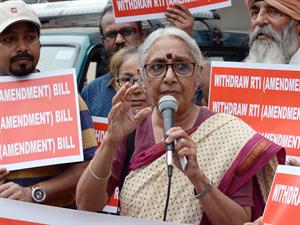PDF chapter test TRY NOW
The history of RTI (Right to Information):
Every citizen of the country is entitled to know the information regarding the governance and the government. One such case that gave the direction to create a new law was “Kulwal Vs Jaipur Municipal Corporation” which took place in \(1986\).
‘Information is the currency of Democracy – Thomas Jefferson”.
“National Campaign for People’s Right to Information” (NCPRI), a civil society group, was founded in \(1996\), with a single objective of getting the RTI legislation passed.
Tamil Nadu: It was the first among the Indian States to pass legislation on Right to Information in \(1997\).
The RTI Act of 2005:
The Parliament of India enacted a new law to ensure transparency in the governance of the country which is the “Right to Information Act of 2005”.
The objectives of the act include:
- Empowering the citizens to question the authority.
- Promotion of Accountability and Transparency.
- To keep a check on Corruption.
- Nurture People participation in the governance.
This act enables a common man to seek information from an authority for which the authority is obliged to answer within \(30\) days. Failing to answer, invites the authority with a penalty.

RTI activist Aruna Roy
Most of the Government agencies like Municipalities, Corporations and other departments are brought under the scanner of RTI. Copies of government orders can also be obtained through the act.
Some of the Defence and Intelligence agencies are exempted from the ambit of the act considering national security reasons.
The Labour Rights:
The labour force constitutes the fulcrum of the economic force of the country. Like every entity, the labours are also entitled to their rights. The Constitution of India lays down certain rights for labours.

Labour Rights
The Articles present in the Fundamental rights part of the constitution also spells the rights labours like “Article 14 (Right to Equality), Article 15 (Right against Discrimination) etc.
\(\text{Article 19 (1) (c)}\): This article states that every citizen has the “right to form associations or unions”.
Also, Provisions present in the “Directive Principles of State Policy” part of the Constitution like “\(\text{Article 39(b)}\) – Equal pay for Equal Work” ensures that the labours are heard.
Many acts were enacted in the \(\text{20th century}\), which witnessed the rise of trade unions and some of the important acts in this direction are:
- Workers Compensation Act of \(1923\).
- Trade Unions Act of \(1926\).
- Payments of Wages Act – \(1936\).
- Industrial Disputes act of \(1947\).
- Minimum Wages Act of \(1948\).
Reference:
RTI activist Aruna Roy - Saikat Paul / Shutterstock
